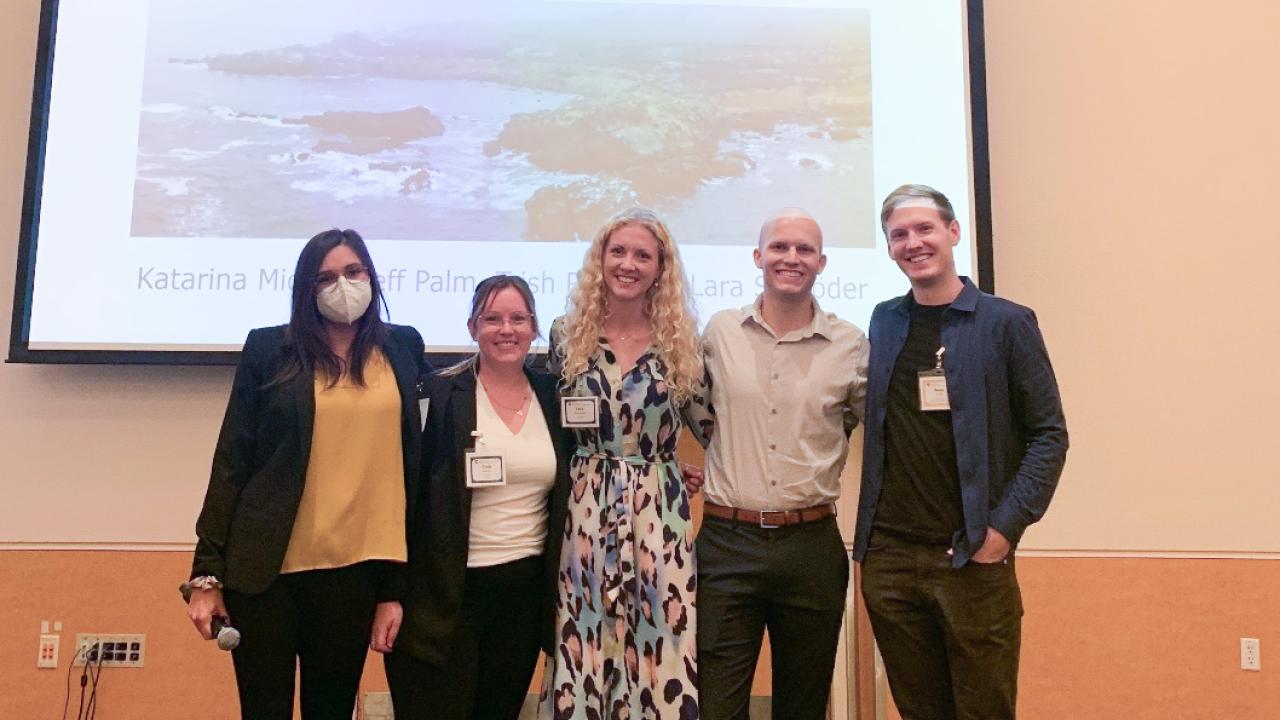
Climate Change and Insurance: A New Way To Protect Coastal Communities From Sea Level Rise
Quick Summary
- Our Policy Clinic project partnered climate resilience with insurance policy to create a framework of equitable and resilient solutions that can guide stakeholders across the state.
This blog is the first in a series of seven, where Environmental Policy and Management students write about the capstone projects they have worked on since January in partnership with external organizations. We would like to acknowledge and thank our client, Kevin Travis, from Ocean Science Trust for partnering with us for this project.
California’s coastal communities are already experiencing the impacts of climate change through sea level rise, flooding, erosion and extreme weather events. Many of the manmade structures currently used to protect coastlines (like levees and dikes) are expensive to maintain, can fail during large storms and in some cases are not tall or strong enough to adapt to rising sea levels. However, many natural ecosystems like coastal wetlands are well suited to these extreme events and are flexible enough to respond to changes in sea level, act as storm breaks and can absorb flood water like a sponge, protecting local infrastructure.
Although the majority of California's wetlands have been destroyed (removing these benefits), their restoration is part of a suite of climate resilience methods called nature-based solutions (NbS) and creates a win-win situation for the insurance industry and communities. Insurance companies can use the restoration of these wetlands and through flood insurance and other policies can fund large-scale restoration projects while decreasing risk for their policyholders and funders.
Our UC Davis Policy Clinic group has worked with Ocean Science Trust (OST) and the California Department of Insurance (CDI) to explore how NbS can be integrated into insurance all along the coast. We have created a working framework of best practices for insurance professionals, governmental agencies and interested community organizations to begin envisioning how California can build climate resilience along the coast while restoring and preserving rare and valuable natural habitats. We found three potential insurance mechanisms that can support coastal restoration and NbS installation: a modified flood insurance policy that reduces premium costs based on the percentage of potential habitat created or conserved, a general insurance rate reduction for land owners who dedicate their land to wetland conservation, and a community-wide insurance policy that is triggered by extreme weather events that could harm local ecosystems.
To test these policies’ ability to work in real-world communities, we applied our framework to the California community facing the fastest rates of sea level rise on the West Coast: Humboldt Bay. We examined how insurance can be integrated into rural land stewardship, how the local oyster and fishing communities could collectively benefit from freshwater and saltwater habitat restoration and how insurance can work on a community-wide scale without leaving our most vulnerable communities behind. Our work will be a valuable tool for both OST and CDI in exploring new policies and pilot projects that integrate NbS into insurance. Our work can also be used by researchers designing community co-created research and advancing scientific knowledge to support climate resilience in coastal areas of all economic statuses. With collaboration and continued pursuit of equitable climate justice, the future of climate resiliency may well be made of miles of marsh-covered coastline and bays of eelgrass and oysters.
